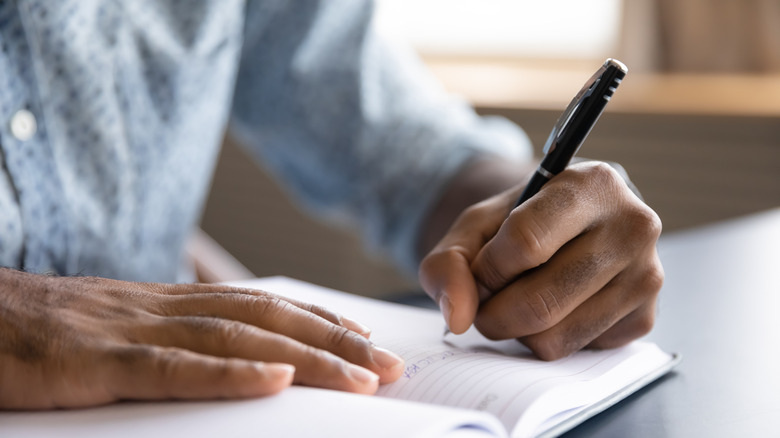The Real Reason Some People Are Ambidextrous
Whether or not you use your left or right hand as your dominant hand is largely determined by your brain. More specifically, left or right-handedness is directly related to the symmetry of the two hemispheres of the brain (via Bustle). The left hemisphere of the brain controls the muscles on the right side of the body, while the right hemisphere controls the left side.
For instance, people who are right-handed tend to be left-brain dominant. This means that the left hemisphere of their brain, which controls the right side of the body, is the dominant side of their brain. People who are left-handed, however, tend to have more symmetrical brains, meaning the left and right hemispheres of the brain are symmetrical and there is no dominant side. Since 75% to 90% of the global population is right-handed, coming across someone who is left-handed is actually more rare than you might think — but what about people who are ambidextrous and use both hands equally?
Ambidexterity is very rare
While there are many left and right-handed people who often use both hands for different types of tasks, people who are genuinely ambidextrous are very few and far between. Although the exact number of people who are mixed-handed is unknown, only 1% of the population is truly ambidextrous and can use both hands equally (via Reader's Digest).
Much like those who are left-handed, ambidextrous people also have symmetrical brains, meaning that there is no dominant hemisphere of the brain. As a result, one common theory of ambidexterity is that ambidextrous people started off as left-handed but were forced to learn to use their right hand due to stigma and superstitious beliefs about left-handedness.
That's because the Latin word for "sinister" is "sinistra," which means "left." Due to this negative connotation, many left-handed people throughout the Middle Ages and well into the 20th century were pressured or forced to use their right hands instead. However, this is just one theory and certainly doesn't account for the many other ways some people may have evolved to use both hands. For instance, people have also learned to become ambidextrous after injuring one hand and needing to rely on the other.


